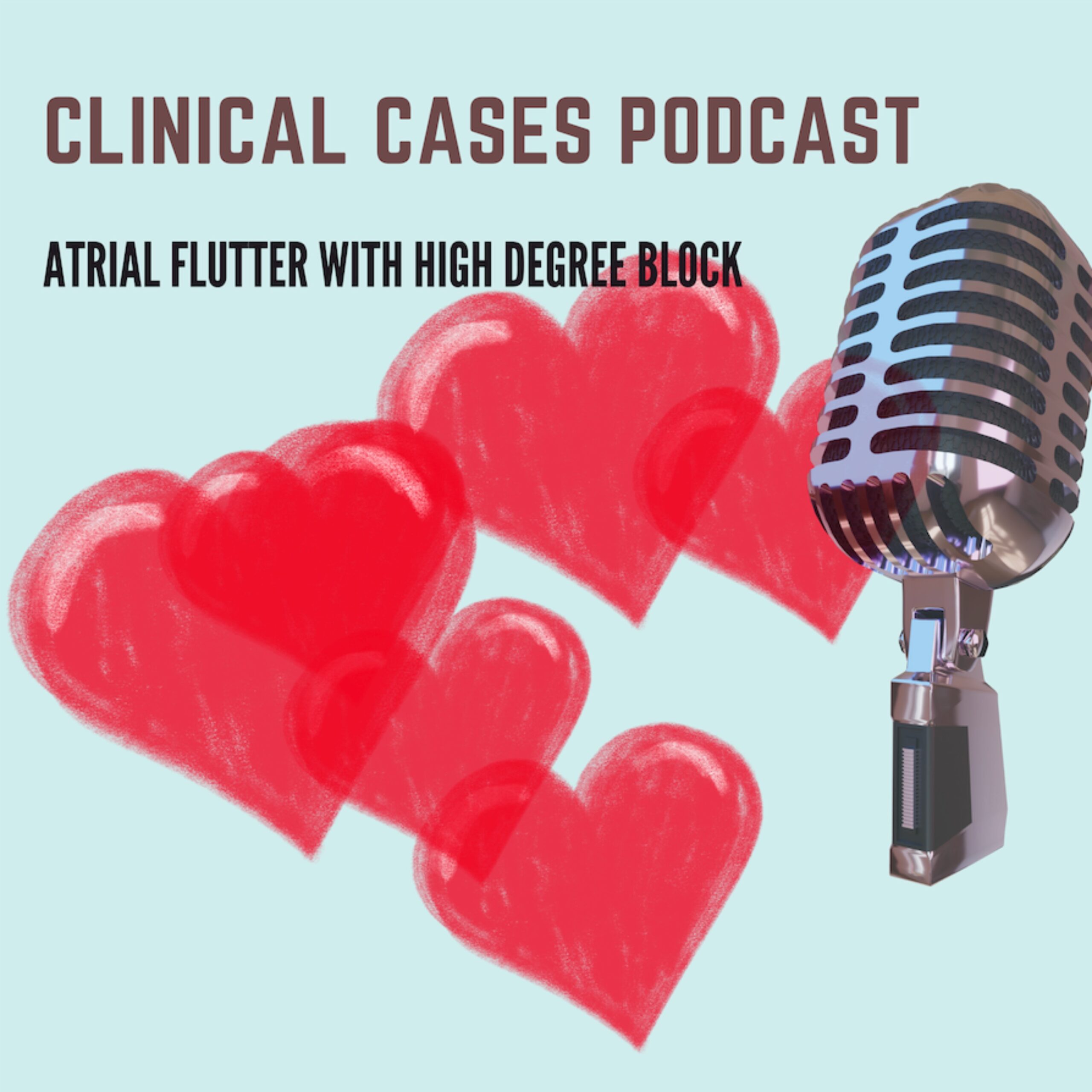A 78yo male woke up in the morning feeling dizzy. The patient was well when lying down, but became light headed every time he got up. He waited, but symptoms did not improve, so later in the afternoon he attended the Care Centre.
Not all the past history is available, but there is a history of CAGS and atrial fibrillation/flutter for which he was on Diltiazem.
The patient was alert and well and there was no chest pain or SOB. The blood pressure was 130/80 and the heart rate was very slow, as you see below. The ECG shows atrial flutter with a significant block
Atrial Flutter
Second most common arrhythmia we will see, after atrial fibrillation
It is macroreentrant atrial tachycardia with the loop above the AV node in the right atrium. Complexes are narrow.
- type 1 flutter is the most frequent. In this type of flutter, right atrial activation rotates in a counterclockwise direction.
It usually produces a narrow complex tachycardia, with a classic sawtooth pattern best seen in lead II, although many prefer V1 as the best lead to look at p waves.
The AVN cannot conduct at the same rate (240-360) as the flutter, so have a block:
- 1:1, which can be unstable
- 2:1, which is the most common
- 3:1
- 4:1
- It can also be variable which gives the appearance of an irregular rhythm.
It will typically not revert with vagal manoeuvres.
How do we distinguish between Atrial flutter and:
- Sinus Tachycardia: This may be tricky, as we will sometimes only see one P wave. (see case below). The biggest difference will be that when we look at the monitor, the rate will change in sinus tachycardia, however in atrial flutter the rate will be regular.
- Atrial Tachycardia: Rates are usually > 100bpm
Remember that whenever the rate is 150bpm + 20 beats, think of of atrial flutter. CAUSES
Think of any causes that dilate the atrium:
- Left sided CCF
- PE
- Left sided valvular heart disease especially tricuspid and mitral valves
- Septal defects
- Hyperthyroidism
- Increased alcohol intake
MANAGEMENT ED Management depends on the stability of the patient
UNSTABLE PATIENT
CARDIOVERSION
- Start at 50-100J
- May become atrial fibrillation
- Giver further shock at 200J
PHARMACOLOGICAL THERAPY
- Amiodarone is the drug of choice
- It may revert the patient.
- Beware do not use Procainamide before an ANV blocker is used, as can have very rapid ventricular rates if control the atrium without controlling the AVN
STABLE PATIENT
Can still use synchronised cardioversion Can slow the ventricular response.
- Beta blockers such as esmolol is very effective.
- Ca channel blockers can also be used.
- Cardiac glycosides such as digoxin decrease AVN conduction but are not good for exertion
- Adenosine is good for revealing flutter.
ANTITHROMBOTIC THERAPY
Antithrombotic therapy can be used in those patients with the same risk profile as atrial fibrillation
- Mechanical heart valves- Warfarin
- Non-valvular AF and history of previous stroke/TIA-warfarin or DOACs are recommended.
All others:
CHA2DS2-VASc
- CCF
- Hypertension
- Age>75
- DM
- Stroke/TIA/thromboembolismVascular disease
- Prior MI, PVD, aortic plaque
- Age 65-75
- Sex(female)
If CHADSVASc score is:
> 2 -Anticoagulate
1 – Aspirin or oral anticoagulants
0 – No antithrombotic therapy.

